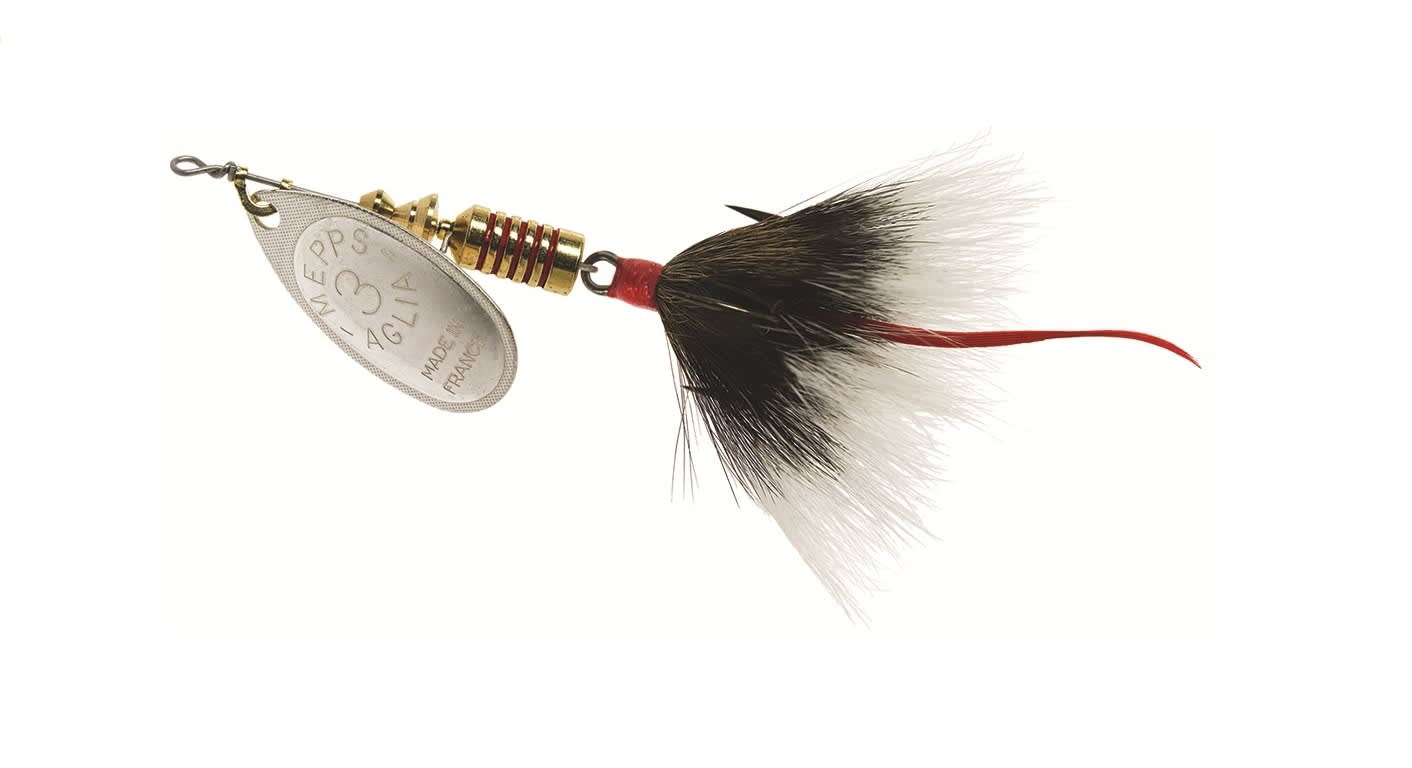Seeing Red: Using a Fish’s Predatory Instincts to Your Advantage
Dan Armitage 04.09.14

The best fisherman I know tweaks most of his fishing lures right out of their original packaging, touching-up the baits before they even make it into his tacklebox, let alone the water. He’s a part-time fishing guide, and uses crankbaits quite a bit because they consistently produce for him and his clients on a variety of fish on a variety of waters.
Other than making sure the lures run “true” and dive to the depth advertised, one of the most common additions he makes to his crankbaits is applying the color red. Usually, he’ll add a slash or two of bright red to the “gill” areas of the minnow-imitating baits, using bright scarlet-colored fingernail polish. Other times, he’ll replace the factory bronze treble hooks with red-hued ones. The angler adds red to his lures—and not just crankbaits—because he believes the color simulates blood or a wound and that predatory gamefish he hopes to attract and hook are more likely to try to eat a baitfish that is injured.
Wounded baitfish are easier to chase down and catch, he says, and the predator fish doesn’t have to expend as much energy to catch its meal. He believes it’s an innate trait among all predators: take the weakest individuals out of the natural system to maintain its overall health.
Another expert angler I know prefers to catch pike over all other species, and he developed a novel way to lure them to his baits after watching a TV documentary about sharks. The film crew used furry, harbor seal-like “puppets” dragged behind a boat to attract the sharks within range of their cameras and to document their attacks on the fake seals. They found that the sharks targeted the faux seals that displayed a white patch on the underside, which simulated a wound revealing the fat beneath a breach in the protective belly fur. Not only did the sharks in the film prefer to attack the seal teasers displaying a white “wound” patch, my friend noted, but actually directed their biting attacks wherever the white patch was placed along the fake seal’s body.
After watching the documentary, he headed for his basement tackle workshop and started tweaking his pike lures to mimic injured fish. After plenty of trial and error and several pike safaris to test his theories, he found that by removing the forward factory treble on his favorite multi-hook jerk baits and replacing it with a red treble dressed with feathers, fur, or rubber skirting to simulate an injury to the throat or gills, his pike take soared. He found that red worked well for the hook dressing, but so did colors that matched the hue of the lure’s body. The angler said he believes it’s the appearance of slashed skin and exposed organ tissue where it shouldn’t be, as much as the color of same, that attracts the pike to his doctored baits.
Tests on bass have shown that fish strike baits painted white, black, or one of the primary colors at about the same rate, actually showing a bit less of an inclination toward lures painted orange or red in some instances. The best strike responses came with two-tone lures, with black over silver a favorite.
Studies show that bass have optimal color appreciation for red, and to a lesser degree green, which means they can detect minor differences in those colors better than they can others. That’s because bass have red and green optical pigments, or cones, for color vision. Other fish species, such as carp, have four cones for color vision: red, green, blue, and ultraviolet. Others, primarily bottom feeders, have just one, and are believed to be incapable of detecting color. Humans have three: red, green, and blue.
While bass see red well, there is no research that shows any special attraction to it, and some say that a bass’ brain isn’t equipped with the neurological processes to put together the blood-is-red-and-bleeding-fish-are-vulnerable argument.
That said, bass are capable of learning, and it’s theoretically possible that a fish can learn to associate red—or any other color—with a positive feeding experience.
That means that fish can also learn from negative experiences—such as from the consequences of attacking “meals” fitted with bronze-colored hooks. The same baits sporting red hooks may not register as dangerous to the fish, and explain why scarlet hooks may be appear to be more productive, at least until the fish are conditioned to the perils of responding to red.

